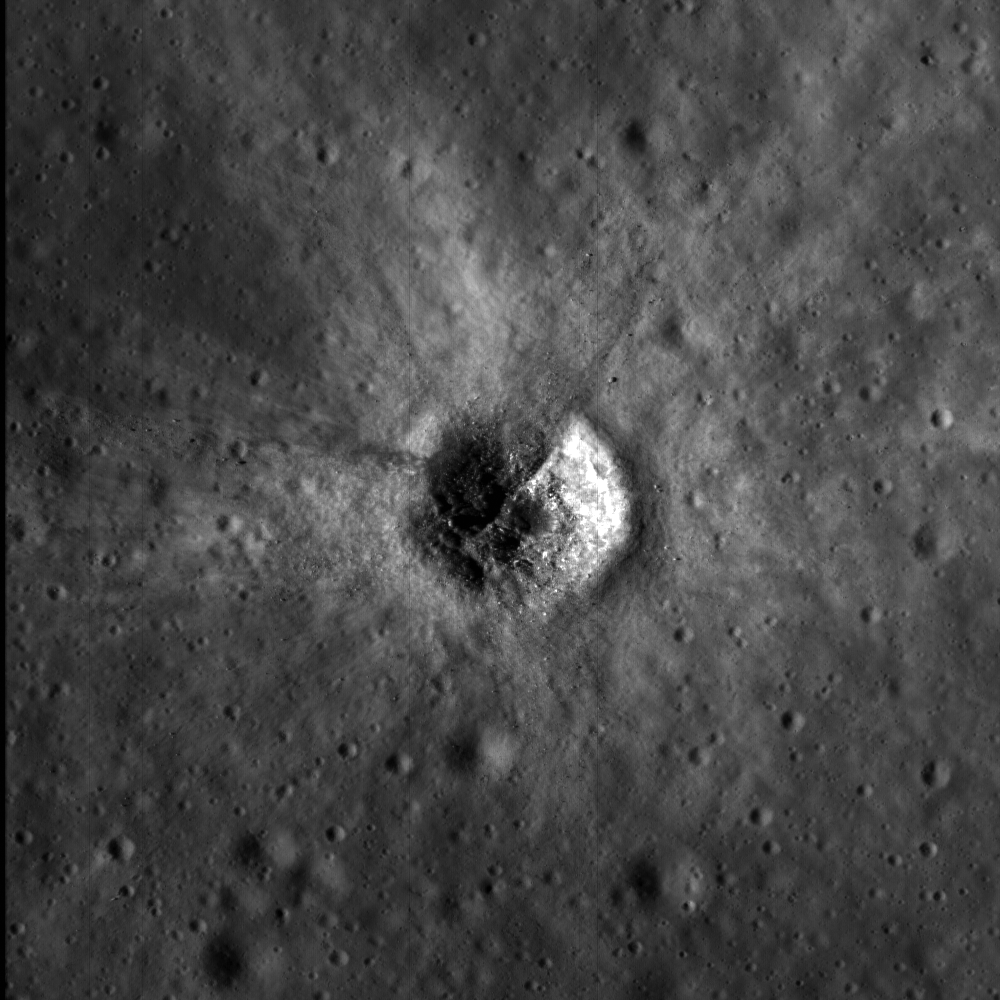
High reflectance ejecta usually indicates a young age for the crater's formation, or at least young for the Moon (less than 500 million years). Over time, ejecta blankets such as this will fade and disappear into the background. Since the ejecta is still relatively young, details of its shape are easily seen in this LROC image (1.1 meters per pixel). Close inspection of ejecta patterns help scientists determine dynamics of the impact event. In this case the "V" shaped gap in the bright ejecta shows the impactor came from the northwest at a very low angle.
The floor of the crater has numerous blocks as large as 13 meters that may be pieces of bedrock excavated from below the regolith (lunar soil); or they may have formed as a result of the impact. This type of boulder can be thought of as "instant rock", because under the extremely high pressure produced by an impact the loose regolith is consolidated into a coherent block or boulder. Apollo astronauts discovered these instant rocks (or regolith breccias) at several locations, with perhaps the most notable being Van Serg crater at the Apollo 17 landing site. Image is 1100 meters wide, north is up, subarea from uncalibrated NAC frame M103138324L. View the whole NAC frame in full resolution (M103138324L).
Published by Jeff Plescia on 3 August 2009